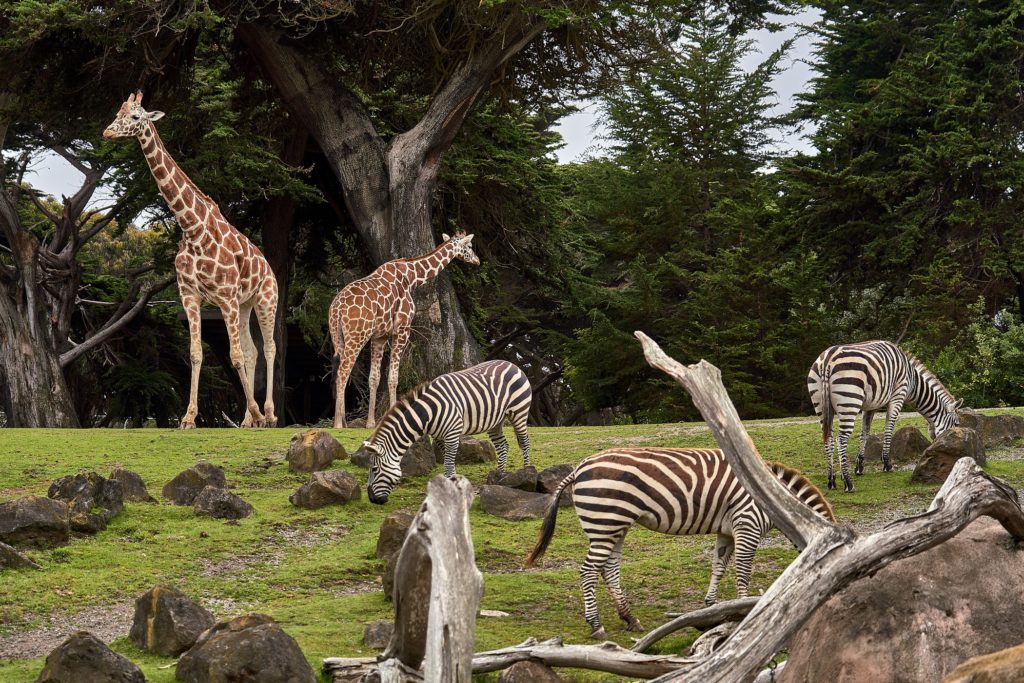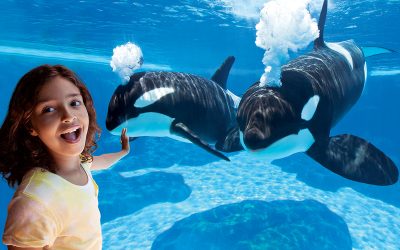How Zoos and Aquariums Are Changing the Way We View Wildlife
As society's values evolve and knowledge of wildlife conservation deepens, zoos and aquariums have found themselves on the frontline of global conservation, education, and scientific research. While once critiqued as mere attractions, these institutions are redefining their roles and reshaping public perceptions of wildlife.
No longer just venues for viewing animals, they now emphasize connection, conservation, and scientific collaboration.
Below, we explore how modern zoos and aquariums are transforming how we interact with, understand, and protect wildlife.
Shifting from Entertainment to Education and Conservation
Zoos and aquariums have transitioned from merely showcasing animals for entertainment to fostering deep, meaningful educational experiences. The public, particularly younger generations, is increasingly aware of the environmental crises threatening biodiversity, and they expect wildlife institutions to play an active role in conservation.
Educational Programs
Modern zoos and aquariums invest heavily in educational programs. From guided tours and animal demonstrations to virtual reality exhibits, these institutions focus on delivering scientifically accurate and engaging content. By learning about animals’ natural behaviors, habitats, and threats, visitors gain insights that traditional schooling often cannot provide. This hands-on learning approach not only fosters awareness but also helps inspire future generations of conservationists.
Conservation Messaging
Facilities are integrating messages about the importance of wildlife conservation into nearly every exhibit, turning visits into a call to action. Zoos and aquariums emphasize how human activities impact species and ecosystems, pushing visitors to think critically about their own lifestyles and encouraging sustainable choices. For example, some exhibits feature interactive stations where visitors learn about reducing plastic waste or supporting ethical wildlife tourism.
Collaboration with Schools and Institutions
Many zoos and aquariums collaborate with educational institutions, providing curriculum-aligned materials and facilitating on-site research projects. Through partnerships with schools, they reach a larger audience and reinforce classroom learning with real-world insights into animal behavior, biology, and conservation science.
Advances in Animal Welfare and Habitat Simulation
Animal welfare has become a central concern in modern zoos and aquariums. Instead of merely displaying animals, institutions are making strides in creating realistic habitats that prioritize animals' physical and psychological well-being.
Habitat Design and Enrichment
Zoos and aquariums now focus on creating habitats that simulate animals' natural environments as closely as possible. For instance, forest enclosures with climbing structures for primates, coral reefs for fish, and vast savannah-like spaces for elephants are designed to reflect the landscapes and ecosystems where these animals would live in the wild. Such designs help reduce stress and provide animals with a more enriching and stimulating environment.
Behavioral Enrichment Programs
Behavioral enrichment has become an essential aspect of animal care. Zoos and aquariums employ dedicated teams of specialists who create activities that stimulate animals’ instincts, encouraging natural behaviors such as hunting, foraging, or problem-solving. These activities, ranging from puzzle feeders for big cats to interactive play for dolphins, aim to enhance mental stimulation and keep animals engaged.
Veterinary Science and Health Monitoring
Advances in veterinary science within zoos and aquariums have revolutionized animal care. Animals in these institutions now receive individualized health monitoring, specialized diets, and veterinary care that supports long lifespans and high-quality living conditions. Some facilities use wearable technology to track animals’ movements, monitor health parameters, and identify any signs of distress or illness early. By prioritizing welfare, these institutions show a profound shift toward treating animals as sentient beings deserving respect and care.
Conservation Breeding and Reintroduction Programs
Zoos and aquariums play a critical role in conservation by supporting breeding programs aimed at preserving endangered species. Beyond managing captive populations, they have become instrumental in reintroducing species into their natural habitats.
Breeding for Genetic Diversity
Breeding programs prioritize genetic diversity to help populations maintain resilience and adaptability. Through databases and genetic analysis, zoos and aquariums match animals for breeding to ensure healthy offspring that can contribute to stable populations. Species like the California condor, Arabian oryx, and black-footed ferret are a few examples of animals that have rebounded due to these breeding initiatives.
Reintroduction into the Wild
The goal for many conservation breeding programs is not only to sustain animals in captivity but also to replenish wild populations. Zoos and aquariums work with international conservation organizations and governments to release animals back into native habitats, where they can contribute to ecosystem balance. For instance, the successful reintroduction of the golden lion tamarin into Brazil’s rainforests stands as a testimony to these institutions' potential to reverse the effects of extinction.
Captive Breeding as a Genetic Safety Net
With threats such as climate change, habitat loss, and poaching putting immense pressure on biodiversity, captive breeding programs act as a "genetic safety net." By preserving the genes of endangered species, zoos and aquariums provide a safeguard against extinction, ensuring that future reintroduction programs can continue if wild populations face catastrophic declines.

Embracing Technology to Enhance Wildlife Research and Conservation
Zoos and aquariums have begun to leverage technology in unprecedented ways, transforming them into hubs for wildlife research and conservation. Through digital innovations, these institutions not only gather valuable data but also provide visitors with immersive experiences that deepen their understanding of wildlife.
Remote Wildlife Monitoring
Many zoos and aquariums work with wildlife researchers to track and monitor animals in their natural habitats. For instance, satellite tracking collars and GPS tags allow scientists to follow the movements of wild animals, gathering data on migration patterns, territorial behaviors, and breeding cycles. This data is invaluable for conservation planning and helps zoos and aquariums to adapt their care protocols and habitat designs.
Artificial Intelligence and Data Analysis
Artificial intelligence (AI) has transformed wildlife research in zoos and aquariums. AI systems analyze vast amounts of data to identify patterns in animal behavior, health, and social dynamics. For example, AI-assisted camera traps monitor animal populations in zoos as well as in the wild, detecting subtle behavioral changes that may indicate health issues. This technology allows for proactive intervention and better-informed breeding and welfare decisions.
Virtual and Augmented Reality
For visitors, technology like virtual reality (VR) and augmented reality (AR) can enhance the learning experience, simulating encounters with endangered species in their native habitats or allowing them to explore ecosystems beyond the scope of traditional exhibits. Some aquariums use VR to give visitors the sensation of diving alongside rare ocean creatures, fostering a personal connection to wildlife conservation.
Conclusion
Zoos and aquariums have evolved into sophisticated institutions that contribute to wildlife conservation, animal welfare, and public education. By shifting from entertainment-focused displays to mission-driven conservation work, they offer new ways to connect people to nature. Modern zoos and aquariums have become essential allies in wildlife preservation, biodiversity protection, and public awareness. As they continue to innovate, these institutions not only bring us closer to wildlife but also play a crucial role in our shared responsibility to protect the natural world.
Reference
- Association of Zoos and Aquariums
- World Association of Zoos and Aquariums
- The Role of Zoos and Aquariums in Conservation
- American Association of Zoo Veterinarians
- International Zoo Educators Association
- Convention on Biological Diversity
- World Wildlife Fund - Species Conservation
- Global Wildlife Conservation
- National Geographic – Wildlife Conservation
- Smithsonian’s National Zoo



































